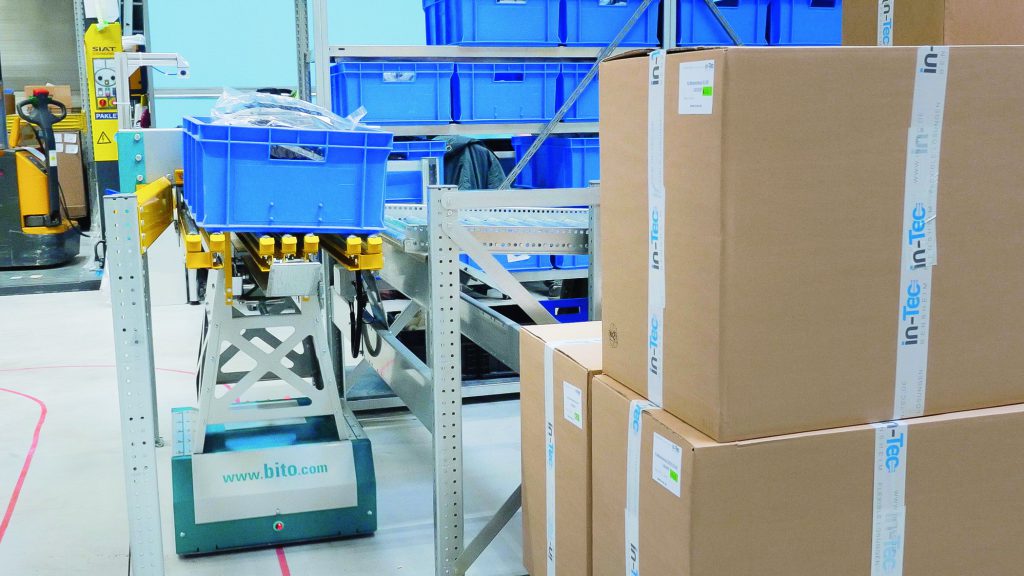Covid Compliant Intralogistics
28th October 2020

What intralogistics solutions can keep warehouses covid-compliant, allowing staff to work safely and productively? Edward Hutchison of Bito makes some suggestions.
As we move cautiously into a still fluid business environment, one thing remains certain: goods need to be picked in warehouses, with the prime consideration of staff health, who must be kept separate – and productive. These two requirements are not always mutually exclusive. Take for example live storage flow racks. They have a long established advantage of goods being replenished – often using forklift trucks – from the aisle behind the rack of flow lanes and picked – often by pedestrians – from the aisle in front.
Add a conveyor to the pick face and zones can be created to allow a picker to remain within a localised area, being responsible for picking items for an order in that zone before sending the
order tote on the conveyor to the next zone. The density of storage provided by live systems allows a greater number of pick locations within a zone than would be possible with traditional
racking. As one carton or pallet is emptied, it is removed for another to flow down the lane to take its place at the pick face – ensuring items are constantly available. In addition to keeping staff separate, live storage maximises their productivity, as pickers sticking to their zones need not waste time and energy traveling long distances during the day.
Driverless transport devices can offer greater agility than a fixed conveyor when it comes to transferring goods from a pick zone. They can take over transport journeys from staff, allowing them to
remain in the pick zones where they are most productive. Bito’s LEO Locative container transporter, for example, can link workstations located between pick zones, the Goods In area, dispatch or, if in a manufacturing plant, to the production lines. No expensive software is required; users simply lay down an adhesive coloured line on the facility floor to mark the route for LEO to follow. Stations where the transporter needs to stop and any tasks that must be performed at each location are also specified using markers applied directly to the floor.
The ease of set up means it can be completely managed in-house – keeping procurement costs low. The user is always in charge of specifying routes and stopping points for the transporter and can scale up simply by adding units when necessary, without committing to large initial capital expenditure. Read the whole story, from our last issue here: https://flickread.com/edition/html/index.php?pdf=5f3d1fcf3160d#42

